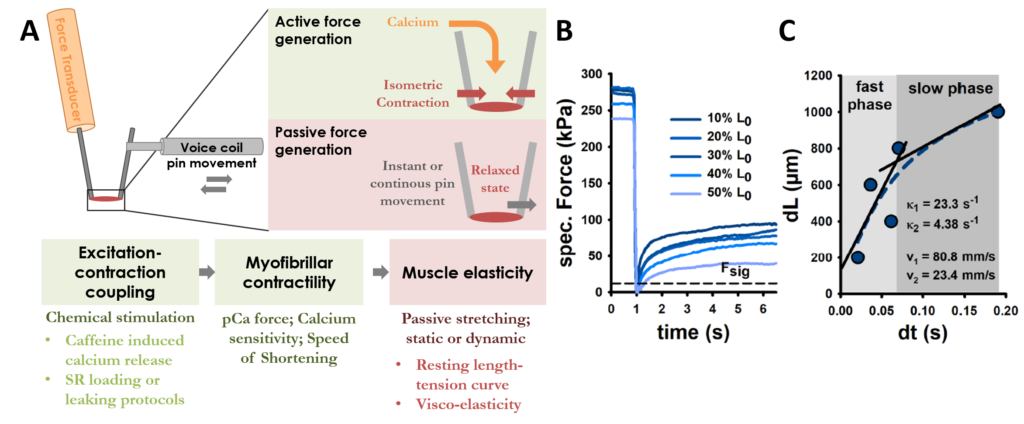The MyoRobot
Versatility of active/passive Material Testing on Muscle Tissue with the MyoRobot
Obtaining active and passive biomechanics parameters across different organ scales is crucial for the understanding of disease mechanisms underlying muscle weakness or to study normal biomolecular mechanisms of contractility. Therefore, the MyoRobot has proven to be a reliable device to generate reproducible data. It provides numerous advantages, such as fully automated pre-set recordings to choose from (in our custom-made MyoWizard software), standardized data analysis on the interface of RStudio and voice coil operated length changes add to its versatility (e.g. expanding to eccentric contractions, controlled sarcomere-length dependence assessments, etc.). Its wide range of applications can be extended to other fields of biotechnology research, e.g. making it also attractive for material testing or validation of bioengineered organoids. Among the active force recordings, the MyoRobot can address several aspects of excitation-contraction coupling to investigate SR loading or leakage, or assessing calcium sensitivity of the contractile Ca2+ biosensor in pCa-force curves. Voice coil actuation further predisposes the system for examining the speed of shortening in ’slack test‘ protocols that etsablish unloaded and internally dampened shortening, as shown in the figure below. Finally, its ability to reliably address passive biomechanics using standardized protocols, such as a resting length-tension curves (to obtain insights into the fiber’s axial compliance) or ’stretch-jumps‘ (to unravel the fiber’s visco-elastic properties) renders the system highly attractive for biomedical and biomaterial research and material testing.
Possible recording protocols involving active and passive force regeneration (A) executable with the MyoRobot. B, shows 5 example force traces of a ’slack test‘ (10-50% L0) crossing the Fsig threshold. C, plot of ’slack time‘ against ’slack length‘, which is described by a four parameter exponential fit, distinguishing between fast, unloaded and slow, internally loaded phase of contraction. Rate constants and velocities are given in the plot.

